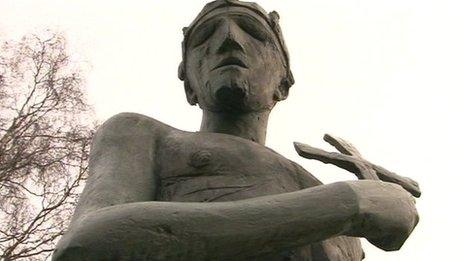St Edmund 'execution site' monument in Suffolk listed
- Published

St Edmund, as depicted in a statue standing at St Edmundsbury Cathedral
A monument which may mark where the first patron saint of England was executed has been given listed status.
The stone cross at Hoxne in Suffolk commemorates the death of St Edmund the Martyr, a former king of East Anglia, in AD870.
Permission was granted in 2017 for four new homes to be built on the site, sparking concern from campaigners.
Historic England has now given the monument Grade II listed status , externalfor its historic and architectural interest.
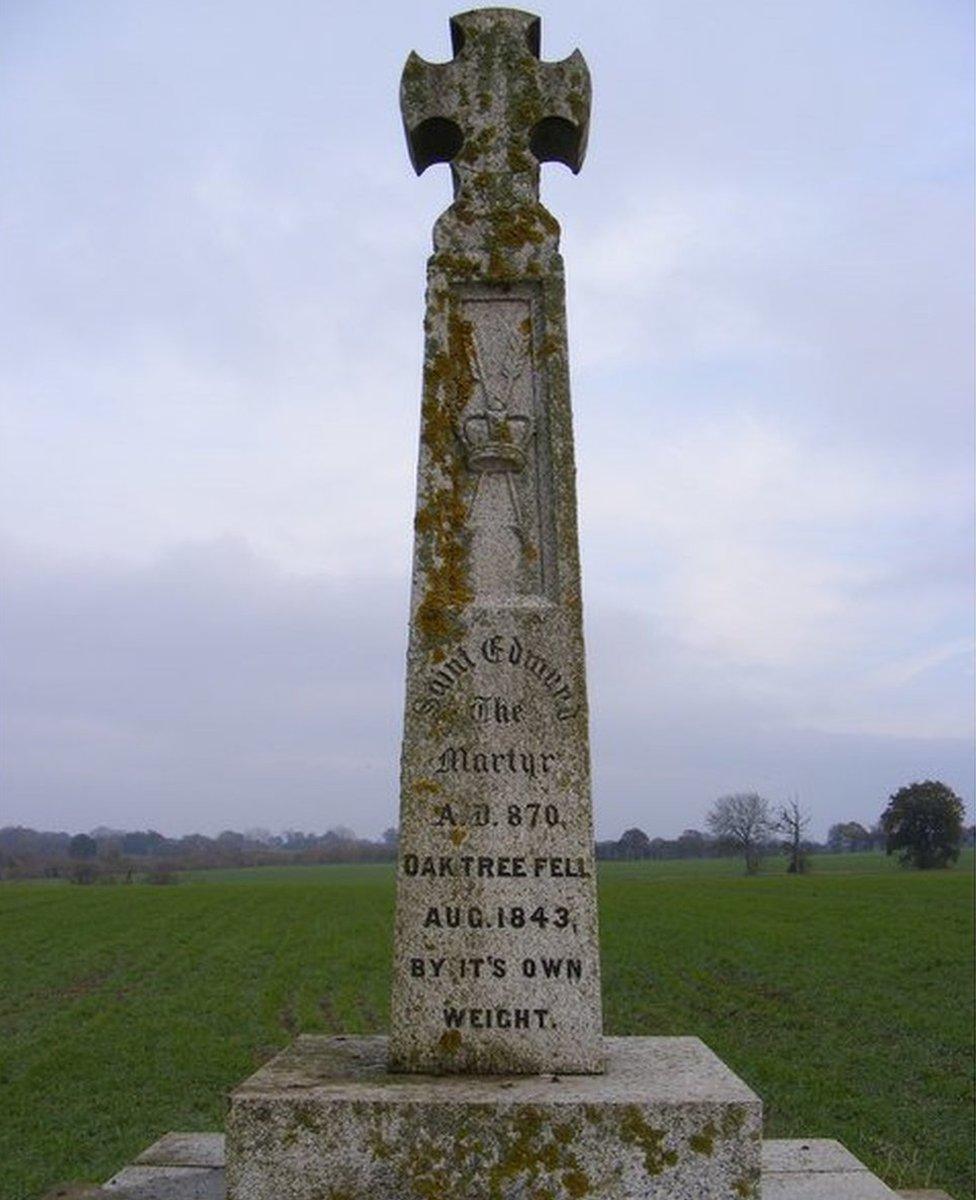
The monument at Abbey Hill has been given Grade II listed status
The structure at Abbey Hill is on the site of an oak tree to which, according to legend, Edmund was bound and then killed by a volley of arrows by the Danish invaders.
The tree fell in 1849 and was found to have an embedded arrow head, considered to be further evidence of the truth of the legend, said Historic England.
It added that the stone monument was a "prominent and frequently visited historic presence" on the hill.
The "dignified simple design" of the monument reflects the legend, featuring a carved crown and arrows.
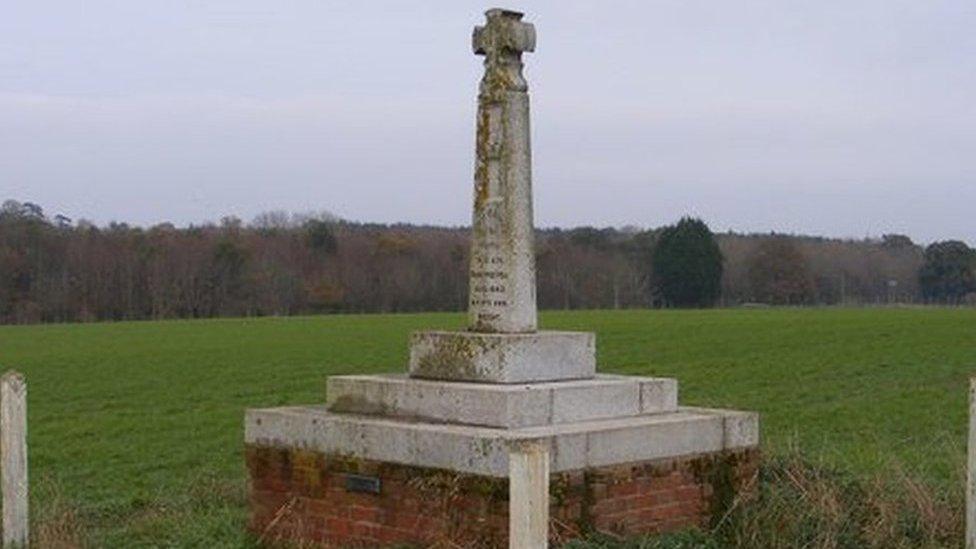
St Edmund's monument at Abbey Hill
In August 2017, Mid Suffolk District Council approved plans for four houses on the site, near the Norfolk border.
The Hoxne Heritage Group had opposed the housing development on the grounds that visibility of the monument would be reduced "and its historical significance will be diminished as a consequence".
"The importance to the village of the legend of St Edmund and the tourism it brings can not be overstated," said the group at the time.
- Published30 August 2017
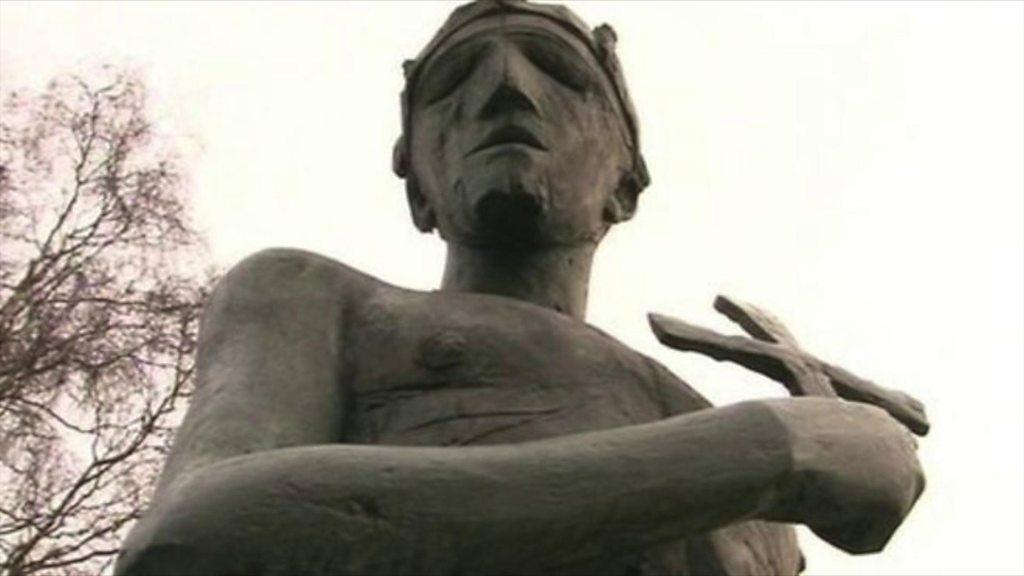
- Published8 March 2018
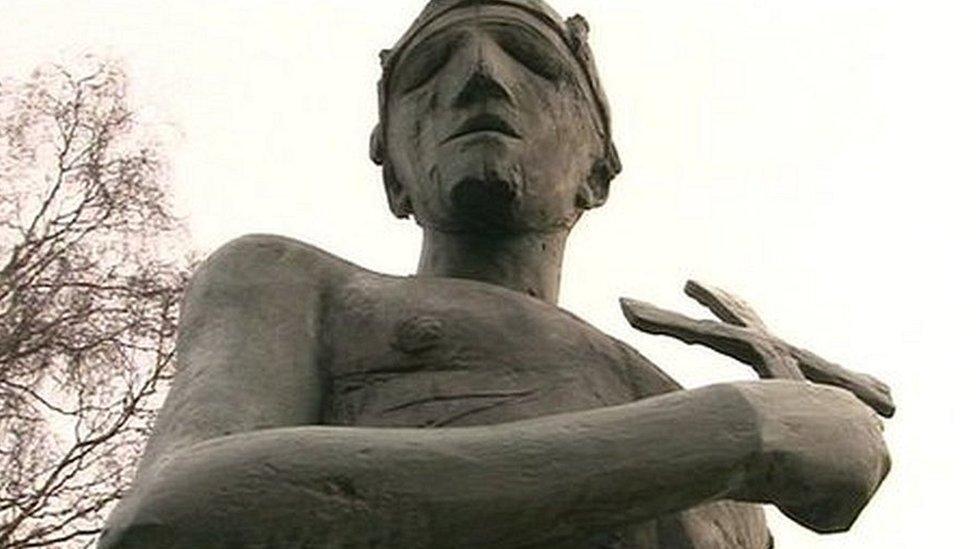
- Published4 June 2013
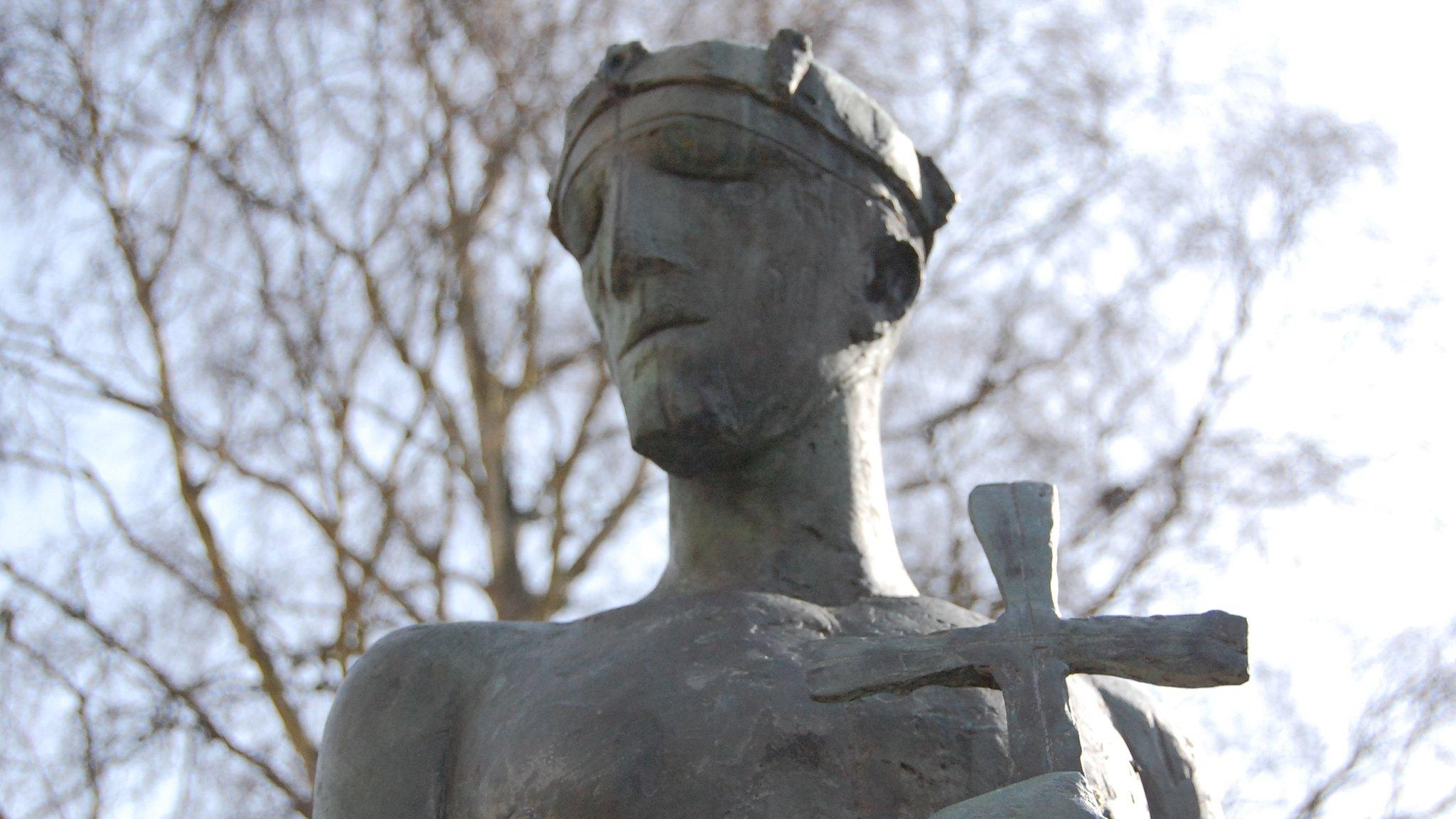
- Published6 February 2013
